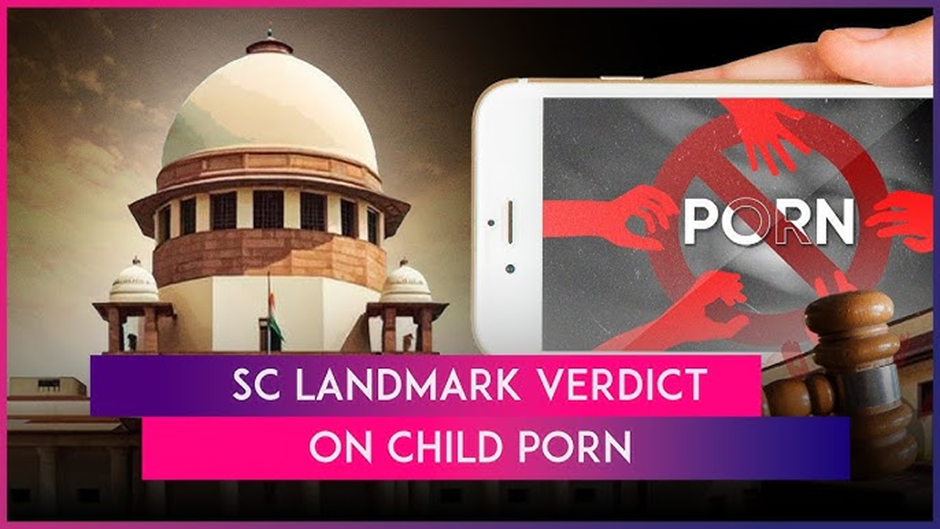- Courses
- GS Full Course 1 Year
- GS Full Course 2 Year
- GS Full Course 3 Year
- GS Full Course Till Selection
- Online Program
- GS Recorded Course
- NCERT (Recorded 500+ Hours)
- Polity Recorded Course
- Geography Recorded Course
- Economy Recorded Course
- AMAC Recorded Course
- Modern India, Post Independence & World History
- Environment Recoded Course
- Governance Recoded Course
- Science & Tech. Recoded Course
- International Relations and Internal Security Recorded Course
- Disaster Management Module Course
- Ethics Recoded Course
- Essay Recoded Course
- Current Affairs Recoded Course
- CSAT
- 5 LAYERED ARJUNA Mentorship
- Public Administration Optional
- ABOUT US
- OUR TOPPERS
- TEST SERIES
- FREE STUDY MATERIAL
- VIDEOS
- CONTACT US
SC’s Ruling on Accessing Child Sexual Abuse Material
SC’s Ruling on Accessing Child Sexual Abuse Material

The Supreme Court of India has clarified the legal consequences of accessing or storing child sexual abuse material (CSAM), reinforcing the Protection of Children from Sexual Offences (POCSO) Act. This decision addresses important social issues related to online content and aims to combat child exploitation.
Key Concepts
What is Child Pornography?
Definition: Any visual depiction (photos, videos) showing sexual acts involving a child.
Legal Terms:
- Possession: Storing or viewing child pornography.
- Non-Reporting: Not reporting known child pornography is a crime.
- Transmission: Sharing or distributing such material.
- Commercial Purpose: Using child pornography for profit.
Relevant Laws (POCSO Act)
- Section 14: Punishment for using a child for pornographic purposes:
- First Offense: Up to 5 years in prison.
- Severe Cases: Up to life imprisonment.
- Section 15: Punishment for storing child pornography:
- Failure to Delete/Report: Fines starting at ₹5,000.
- Intentional Distribution: Up to 3 years in prison.
- Section 67B of the IT Act: Penalizes the use and sharing of obscene materials involving children.
Background of the Case
In January 2020, a person was accused of possessing child pornography in Chennai. The investigation revealed downloaded files with such content. The accused challenged the charges in the Madras High Court, which ruled that mere downloading for personal use wasn’t a crime.
Madras High Court Decision
- Ruling: The High Court stated that the accused did not use children for pornography, viewing it as a personal moral failing rather than a criminal act.
- Concerns: This ruling could normalize child pornography and encourage others to think they won’t be punished.
Key Highlights of SC Ruling
-
Legal Clarification:
The Supreme Court emphasized that accessing or viewing sexual material involving children is a punishable offense under the POCSO Act. This ruling followed a Madras High Court decision that had dismissed a case against a person for merely viewing such content, arguing that the law only targeted the creation and sharing of it. -
Terminology Change:
The Court suggested replacing the term "child pornography" with "Child Sexual Exploitative and Abuse Material (CSEAM)" to better reflect the seriousness of the crime and avoid trivializing it. -
Constructive Possession Doctrine:
The Court used the concept of "constructive possession," stating that viewing or displaying online material without having it saved on a device still counts as "possession." This means individuals can be held responsible for accessing CSAM if they have control over it, even if they don't store it. -
Intent to Share or Transmit:
Not deleting, destroying, or reporting the material can be seen as intent to share or pass it on, which increases legal responsibility. -
Guidance for Law Enforcement:
The Court advised against narrow interpretations of laws that could weaken the intent to punish online offenses against children. It highlighted Section 67B of the Information Technology Act as an effective way to address online exploitation and abuse. -
Responsibility of Online Platforms:
Online platforms and services are reminded of their duty to remove CSAM and report it to the police. -
Call for Comprehensive Education:
The Court urged the government to implement thorough sex education programs that include the legal and ethical aspects of child sexual abuse material.
About the Doctrine of Constructive Possession
Definition: This legal idea means a person can be charged with possession of an item, even if they do not physically have it. It is based on the intention and ability to control the item.
Key Elements:
- Knowledge of the Item’s Presence: The person must know the item exists.
- Ability to Control: The person must have the power to manage the item.
- Intent to Possess: Intent can be inferred from the situation surrounding the item.
About the POCSO Act
- Enacted: 2012
- Purpose: Provides a legal framework to protect children (under 18) from sexual abuse and exploitation.
- Key Features:
- Defines a "child" as anyone under 18.
- Requires people to report any suspected child sexual abuse, with penalties for not doing so.
- Sets severe penalties for various offenses, including a minimum of 10 years in prison for serious sexual assault, with the possibility of life imprisonment.
Conclusion
The Supreme Court’s ruling strengthens the fight against child sexual abuse in India. By clarifying legal interpretations and suggesting a change in terminology, the Court aims to improve accountability and awareness about child exploitation, emphasizing the need for strong law enforcement and educational programs.
Must Check: Best IAS Coaching In Delhi
UPSC Prelims Result 2024 Out: Expected Cut Off & Other Details, UPSC Prelims 2024 Answer with Explanation, Daily Prelims Quiz, Daily Current Affairs, MONTHLY CURRENT AFFAIRS TOTAL (CAT) MAGAZINE, Best IAS Coaching Institute in Karol Bagh, Best IAS Coaching Institute in Delhi, Daily Mains Question Answer Practice, ENSURE IAS UPSC Toppers, UPSC Toppers Marksheet, Previous Year Interview Questions, UPSC Syllabus



